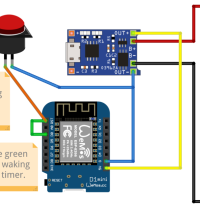- makeITcircular 2024 content launched – Part of Maker Faire Rome 2024Posted 2 weeks ago
- Application For Maker Faire Rome 2024: Deadline June 20thPosted 2 months ago
- Building a 3D Digital Clock with ArduinoPosted 7 months ago
- Creating a controller for Minecraft with realistic body movements using ArduinoPosted 7 months ago
- Snowflake with ArduinoPosted 8 months ago
- Holographic Christmas TreePosted 8 months ago
- Segstick: Build Your Own Self-Balancing Vehicle in Just 2 Days with ArduinoPosted 8 months ago
- ZSWatch: An Open-Source Smartwatch Project Based on the Zephyr Operating SystemPosted 9 months ago
- What is IoT and which devices to usePosted 9 months ago
- Maker Faire Rome Unveils Thrilling “Padel Smash Future” Pavilion for Sports EnthusiastsPosted 10 months ago
Oracle Open Sourced Graphpipe to Improve the Deployment of Machine Learning Models

Oracle open-sourced Graphpipe, a tool created to make it easy to serve machine learning models in the cloud made by popular frameworks like TensorFlow, MXNet, Caffe2, and PyTorch.
GraphPipe is designed to solve three particular challenges: First, there’s no standard for model serving APIs, meaning business applications typically need a bespoke client to communicate with a deployed model. Next, building a model server is simply hard, and there are few out-of-the-box solutions for deployment. Lastly, the solutions that enterprises typically use now — like a python-JSON API — don’t provide the performance needed for critical business applications.
GraphPipe includes: a set of flatbuffer definitions, guidelines for serving models consistently according to the flatbuffer definitions, examples for serving models from various machine learning frameworks, and client libraries for querying models served via GraphPipe.
With these tools, a business should be able to deploy a model across multiple servers, or create an ensemble of models from different frameworks, with a common protocol. GraphPipe should also help deploy machine learning for IoT applications that rely on running models remotely.
The tool is available for free on Github and joins a series of open source tools launched in recent years for developers who want to use AI.















